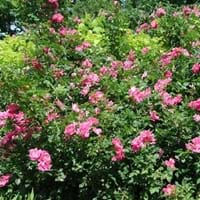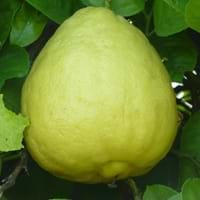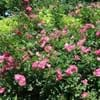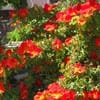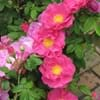Life Span
Perennial
Perennial
Origin
Europe, Northern America, Northern Europe
Hybrid origin, Asia
Types
Not Available
Not Available
Number of Varieties
Not Available
Habitat
shores, Shores of rivers or lakes
Lawn
USDA Hardiness Zone
9-10
11-12
Sunset Zone
7, 8, 9, 12, 13, 14, 15, 16, 17, 18, 19, 20, 21, 22, 23, 24
H1, H2, 8, 9, 12, 13, 14, 15, 16, 17, 18, 19, 20, 21, 22, 23, 24
Habit
Spreading
Oval or Rounded
Flower Color
Baby Pink, Not Available, Pink, Red
White, Red, Purple
Flower Color Modifier
Not Available
Bicolor
Fruit Color
Not Available
Yellow, Yellow green
Leaf Color in Spring
Green
Dark Green
Leaf Color in Summer
Green
Dark Green
Leaf Color in Fall
Green
Dark Green
Leaf Color in Winter
Green
Light Green
Plant Season
Spring, Summer
Spring, Summer, Fall, Winter
Sunlight
Full Sun, Partial Sun
Full Sun, Partial Sun
Growth Rate
Medium
Medium
Type of Soil
Clay, Loam, Sand
Loam, Sand
The pH of Soil
Acidic, Neutral
Acidic, Neutral
Soil Drainage
Well drained
Well drained
Bloom Time
Early Spring, Spring, Late Spring
Indeterminate
Tolerances
Drought
Drought
Where to Plant?
Container, Ground, Pot
Ground, Pot
How to Plant?
Seedlings
Cuttings, Grafting, Seedlings
Plant Maintenance
Medium
Medium
Watering Requirements
occasional watering once established
Reduce watering in winter, Water frequently while growing
In Summer
Lots of watering
Lots of watering
In Spring
Moderate
Moderate
In Winter
Average Water
Average Water
Soil pH
Acidic, Neutral
Acidic, Neutral
Soil Type
Clay, Loam, Sand
Loam, Sand
Soil Drainage Capacity
Well drained
Well drained
Sun Exposure
Full Sun, Partial Sun
Full Sun, Partial Sun
Pruning
Remove damaged leaves, Remove dead branches, Remove dead leaves
Remove damaged leaves, Remove dead branches, Remove dead leaves
Fertilizers
Doesn't require fertilization when grown in rich soil
All-Purpose Liquid Fertilizer
Pests and Diseases
Botrytis Blight, Powdery mildew, Sooty Mold, Verticillium Wilt
Leafminer
Plant Tolerance
Drought
Drought
Flower Petal Number
Single
Single
Fragrant Bark/Stem
Yes
Yes
Foliage Texture
Medium
Medium
Foliage Sheen
Matte
Glossy
Attracts
Hummingbirds, Butterflies
Not Available
Allergy
no allergic reactions
Anaphylaxis, Oral Allergy
Aesthetic Uses
Showy Purposes
Bonsai
Beauty Benefits
Perfumes
Not Available
Environmental Uses
Air purification
Air purification
Medicinal Uses
No Medicinal Use
Astringent, Diuretic, Febrifuge
Part of Plant Used
Whole plant
Fruits, Pulp, Tree trunks
Other Uses
Oil is used for aromatherapy, Used as Ornamental plant
Cosmetics, Disinfectant, Edible syrup
Used As Indoor Plant
No
Yes
Used As Outdoor Plant
Yes
Yes
Garden Design
Foundation, Mixed Border
Container, Edible, Fruit / Fruit Tree, Houseplant, Topiary / Bonsai / Espalier, Tropical
Botanical Name
Rosa rugosa
CITRUS limon 'Ponderosa'
Common Name
Ramanas Rose, Japanese Rose, Rugosa Rose
Lemon, Ponderosa Lemon
In Hindi
Japanese Rose
Ponderosa Lemon
In German
Japanese Rose
Ponderosa Zitrone
In French
Japanese Rose
Citron Ponderosa
In Spanish
Japanese Rose
Ponderosa Lemon
In Greek
Γιαπωνέζικο Τριαντάφυλλο
Ponderosa Lemon
In Portuguese
Japanese Rose
Ponderosa Lemon
In Polish
Japanese Rose
Ponderosa Lemon
In Latin
Japanese Rose
Ponderosa Lemon
Phylum
Not Available
Not Available
Class
Not Available
Magnoliopsida
Order
Malvales
Sapindales
Family
Cistaceae
Rutaceae
Clade
Angiosperms, Eudicots, Rosids
Angiosperms, Eudicots, Rosids
Tribe
Not Available
Citreae
Subfamily
Not Available
Aurantioideae
Importance of Japanese Rose and Ponderosa Lemon
Want to have the most appropriate plant for your garden? You might want to know the importance of Japanese Rose and Ponderosa Lemon. Basically, these two plants vary in many aspects. Compare Japanese Rose and Ponderosa Lemon as they differ in many characteristics such as their life, care, benefits, facts, etc. Every gardener must at least have the slightest clue about the plants he wants to plant in his garden. Compare their benefits, which differ in many ways like facts and uses. The medicinal use of Japanese Rose is No Medicinal Use whereas of Ponderosa Lemon is Astringent, Diuretic and Febrifuge. Japanese Rose has beauty benefits as follows: Perfumes while Ponderosa Lemon has beauty benefits as follows: Perfumes.
Compare Facts of Japanese Rose vs Ponderosa Lemon
How to choose the best garden plant for your garden depending upon its facts? Here garden plant comparison will help you to solve this query. Compare the facts of Japanese Rose vs Ponderosa Lemon and know which one to choose. As garden plants have benefits and other uses, allergy is also a major drawback of plants for some people. Allergic reactions of Japanese Rose are no allergic reactions whereas of Ponderosa Lemon have Anaphylaxis and Oral Allergy respectively. Having a fruit bearing plant in your garden can be a plus point of your garden. Japanese Rose has no showy fruits and Ponderosa Lemon has showy fruits. Also Japanese Rose is not flowering and Ponderosa Lemon is not flowering . You can compare Japanese Rose and Ponderosa Lemon facts and facts of other plants too.
